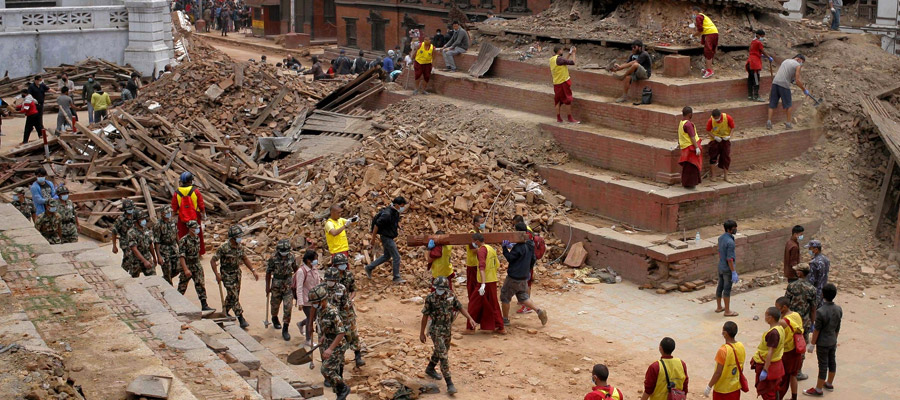
A Rich History in rubble
Until the morning of Saturday 25 April, the soaring temples and palaces of the Kathmandu Valley were the gems of a nation wealthy in cultural treasures, giving the Nepalese capital a skyline straightaway identifiable just like as London or New York. All of the Kathmandu Valley was added to the UNESCO World Heritage list in 1979 in recognition of the significance of such a vast assembling of medieval architecture in one spot. The first massive shock which hit the valley eliminated 600 years of history in seconds, reducing many of the most iconic temples in Nepal to tinder sticks and rubble. Locals witnessed the terrifying ordeal as pagodas crumbled to dust in Kathmandu Durbar Square, Patan Durbar Square and Bhaktapur Durbar Square. Temple spires crumbled at Swayambhunath and Kathmandu’s unique Dharahara Tower collapsed like a deck of cards, turning into a virtual grave for dozens of sightseers inside. Initial reports put the death toll at 180 at that site alone.
When the first pictures of the disaster were flashed, many thought that the devastation was total. This was more or less the notion given by many news reports in both Nepali and international newspapers. However, over time after the quakes, it is now surely clear that many monuments defied the force of nature and emerged unscathed from the disaster. Tantamount to this, there were reports that Kathmandu Durbar Square was totally flattened and that half of buildings in Bhaktapur were turned to dust and debris, with 80% of temples destroyed, but then this all turned out to be absolute exaggeration, though the damages that did occur of some monuments were severe.

Leave Comment